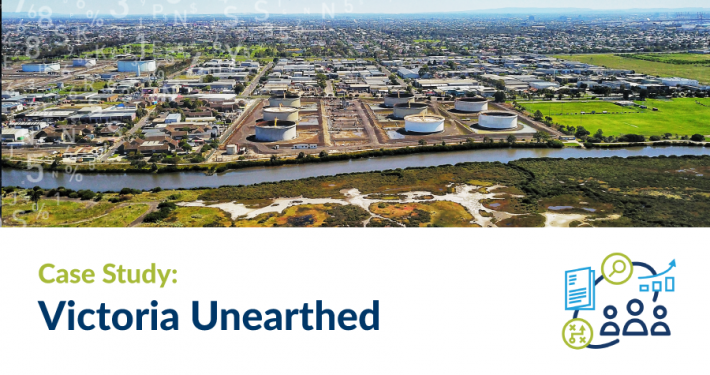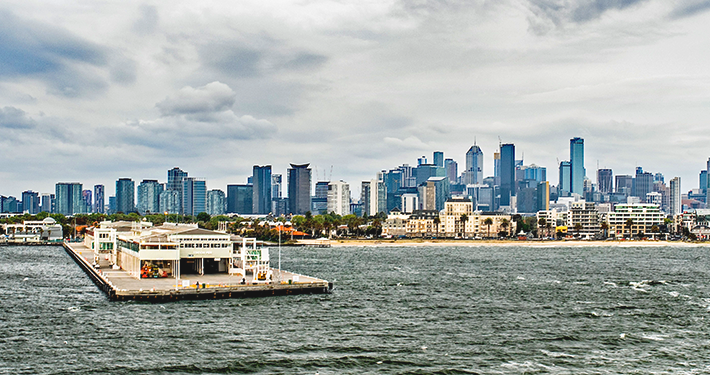NRM Planning for Climate Change Wins at 2014 VSE Awards
Spatial Vision is pleased to announce that the NRM Planning for Climate Change project, undertaken in partnership with Natural Decisions for 7 Victorian CMAs (coordinated by Corangamite CMA), has received the 2014 Victorian Spatial Excellence Award for Sustainability and Environment.
The Victorian Surveying and Spatial Sciences Institute and the Spatial Industries Business Association provide this Sustainability and Environment award to a project that helps to resolve issues in an environmental context including scarce water resources, water property rights, biota rights and salinity management.
The project was funded under the Australian Government’s Regional Natural Resource Planning for Climate Change Fund (NRM Fund) which supports regional NRM organisations to incorporate climate change mitigation and adaptation information and approaches into regional NRM plans. The support for this project is possibly best summarised in the following (enthusiastic and possibly outrageous) quote from a CMA stakeholder:
“I attended the Expert Panel Workshop for this project – one member stated that the team had achieved what UNESCO couldn’t achieve with hundreds of scientists and a four year timeframe.”
Winning this award is a further testament to the significant contribution made by the project team in developing a scientifically sound framework and technologically innovative approach into which new data and knowledge will be applied as it becomes available. The project outputs are already being used by Victorian CMAs to update current catchment plans to account for the potential impacts of climate change.
Judges’ Comments:
“This project incorporates the latest scientific findings on climate change into a spatial risk assessment framework that allows Catchment Management Authorities to better plan their response to climate change against a range of possible scenarios.”
Climate Change Webinar :: Questions & Answers
Q – You mentioned that your analysis worked at the state scale and that some non focus NRM areas had the information you created?
A – Yes. Study covered the entire state.
Q – Can you please shoot the outputs of your method for the NECMA region? I’d like to do some analysis to see if it telling us a different story regarding vulnerability, adaptation priority and even mitigation (bio-sequestration) priority to the method we used. The approaches are a little different, but based on similar foundational conceptual thinking e.g. which stressors are more important than others?
A – Happy to do this, but there would be a cost, and it will need to be cleared with our key client, Corangamite CMA (Chris Pitfield) who commissioned the work. We have provided the outputs from the study to WG CMA that also undertook its own study. In addition to provision of the data, we were very keen for a more detailed presentation on the process and outputs to be provided to the CMA to ensure any application of the project outputs is made with a suitable understanding of the outputs.
Q – Ideally this will be in a format that’s easy to do some form of quick comparison e.g. pick/supply a sub sample area from the NE that has a diversity of scores that we can do some analysis on. If you want I can supply an output of ours, but I assume this will be more work for you?
A – If you have a particular NRM asset type, climate scenario (RCP) and time frame, perhaps a map view we have already produced will suffice. ie. For the NRM asset types identified we have results for rcp4.5 and rcp8.5, for 2030, 2050, 2070 and 2090.
Q – Why no consideration of evapotranspiration? This would impact on water and soil, animal and plants?
A – Good question. As indicated in the presentation for practical reasons we limited ourselves to two climate stressors per asset type, and adopted rainfall (months and annual) and av max daily temperatures (months) in preference to evapotranspiration. Evapotranspiration was discussed. Yes additional factors could be added, although the implications on how the impact results expressed for different climate exposures are brought together would need to be considered.
Q – Have you tested other weath stressor such as average daily temperature before select the Max temperature for the project?
A – No. We had expert opinion on what was thought to be the most reasonable climate parameter to apply for a particular asset type, and then applied it. We initially had different time periods for av max daily temperatures, but settled on the summer/autumn (Nov to April) period as the most important determinant of impact
Q – Some studies showed that both Max and Min temperations are important for health . So it is interest to know your opinion?
A – As previously indicated, for practical reasons we limited ourselves to two climate stressors per asset type, and we did consider using min daily temperatures for some asset types. However, we concluded rainfall (months and annual) and av max daily temperatures (months) were the most critical. Additional factors could be added, although the implications on how the impact results expressed for different climate exposures are brought together would need to be considered.
For more information, please get in touch



